This month, we'll dive into the recently adopted Long Term Plan, and how to participate in local democracy. Intrigued by the night sky? Discover hidden gems for stargazing in Oxford with "Oxford Dark Sky" and where to celebrate Matariki. We'll also meet a passionate Kaiapoi advocate working for rainbow and care-experienced communities, and introduce our new District Libraries Manager!
A Prudent Plan that Enables Growth — Council’s Long Term Plan
The Waimakariri District Council has adopted its Long Term Plan (LTP), aiming to balance affordability for residents while maintaining essential services and infrastructure. Over 330 residents submitted feedback on the draft plan, influencing the final decisions.
Waimakariri’s rates increase is set at 9.39%, one of the lowest in the country and the lowest in the greater Christchurch area, compared to the national average of 16%. The Council has worked hard to keep rates affordable amid high inflation and aims for lower increases around 4% in the coming years.
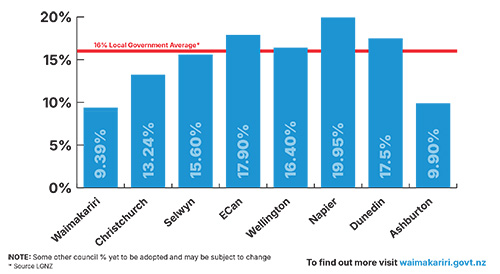
Council sought community feedback on major issues in its Long Term Plan, including:
- Funding Flood Resilience: To address increased flooding risks from climate change, the Council is forming an Infrastructure Resilience Team and establishing a Flood Recovery and Resilience Fund for stormwater management issues.
- Rangiora Eastern Link Road and Skew Bridge: The Council will lobby the NZ Transport Agency (NZTA) for funding to build the Rangiora Eastern Link road and replace Skew Bridge in West Kaiapoi, aiming to alleviate traffic congestion.
- Community Facilities for Future Growth: With a projected population increase of 30,000 by 2050, the Council plans to strategically build community, sporting, and aquatic facilities to support leisure and recreation.
- Trevor Inch Memorial Rangiora Library Extension: The Council supports extending the library in later years of the LTP to meet community needs without overcommitting financially, with potential inclusion of the museum in future developments.
- Natural Environment Strategy: The Council’s Natural Environment Strategy focuses on creating natural play areas, enhancing biodiversity awareness, developing more reserves, and extensive planting to connect people with nature and sustain resilient ecosystems.
Ways to Participate in Local Democracy
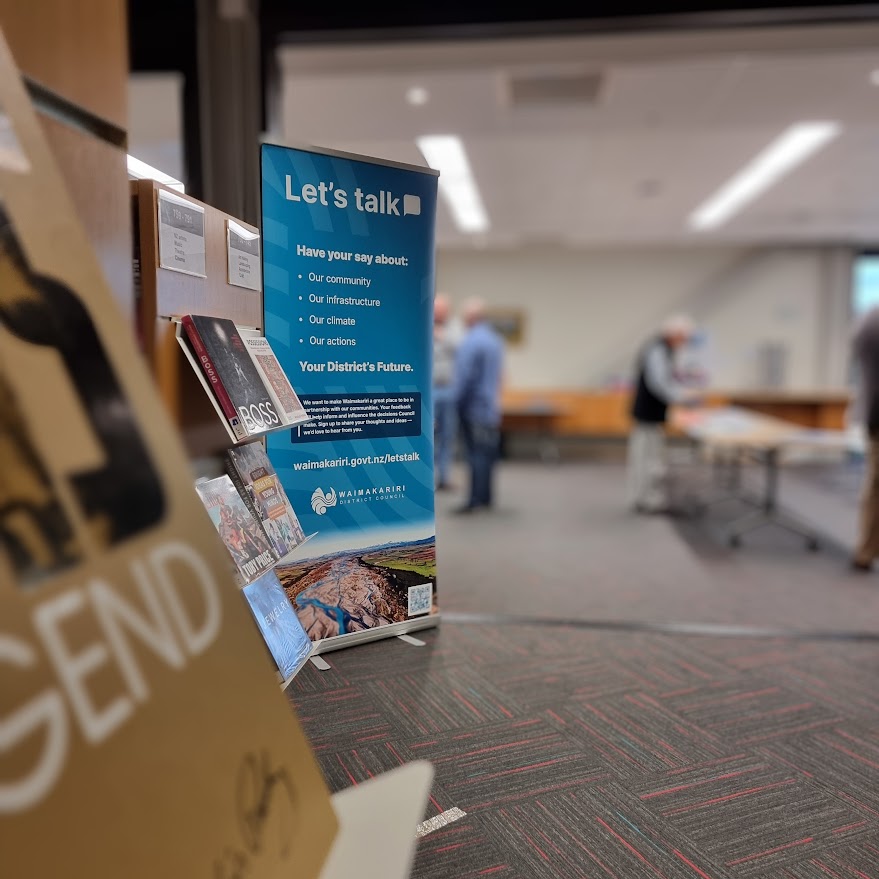
In a healthy democracy, it’s important to take part and share your views.
New Zealand has two tiers of government: central and local. Both are elected through representative democracy.
In a representative democracy, you vote for the people you want to represent you on the issues that matter.
Central government is made up of members of parliament who are elected from across the whole country every three years to make laws and decisions affecting all New Zealanders.
Local government is made up of the mayor or chair, councillors, and community board members and are also voted in by ratepayers and residents every three years.
Don’t worry – the elections of central and local government don’t overlap!
You could think of central government as the directors of a large company and local government is like a department within that company. Local government delivers on the central strategy for a specific area and generally make sure everything runs smoothly.
In Waimakariri, residents are represented by a Mayor and ten Councillors who represent the three wards in the District.
Local government is all about community. The Council is responsible for making decisions to ensure a healthy environment, great community facilities, reliable infrastructure and services, safe spaces for all, and a culture that supports each individual’s sense of belonging.
Council’s work hard to ensure that the needs and wants of residents are heard and considered when decisions are made.
The way local government achieves this is through community engagement. This includes public forums, consultations on major decisions, and opportunities for citizens to provide feedback on council policies and projects.
When making decisions, elected representatives consider the interests and viewpoints of residents while also considering broader regional or national policies.
How you can get involved:
There are three main ways to make sure your views are heard, and you are represented:
- Make a submission on consultation topics. Before making any big decisions, the Council seeks feedback and input from the community so your views can be considered. If you register on our Let’s Talk website you’ll be kept up to date with all topics for input that interest you – visit Let’s Talk Waimakariri here.
- Vote during local government elections. Local government elections are held every three years, and we encourage you to learn about the candidates, what they believe and stand for, and get out and vote! Make sure you’re enrolled to vote in the next election – visit the Electoral Commission site.
- Become an elected member. Become a decision maker for Waimakariri. Any New Zealand citizen who is enrolled to vote can run for an elected member position.
Meet our Staff
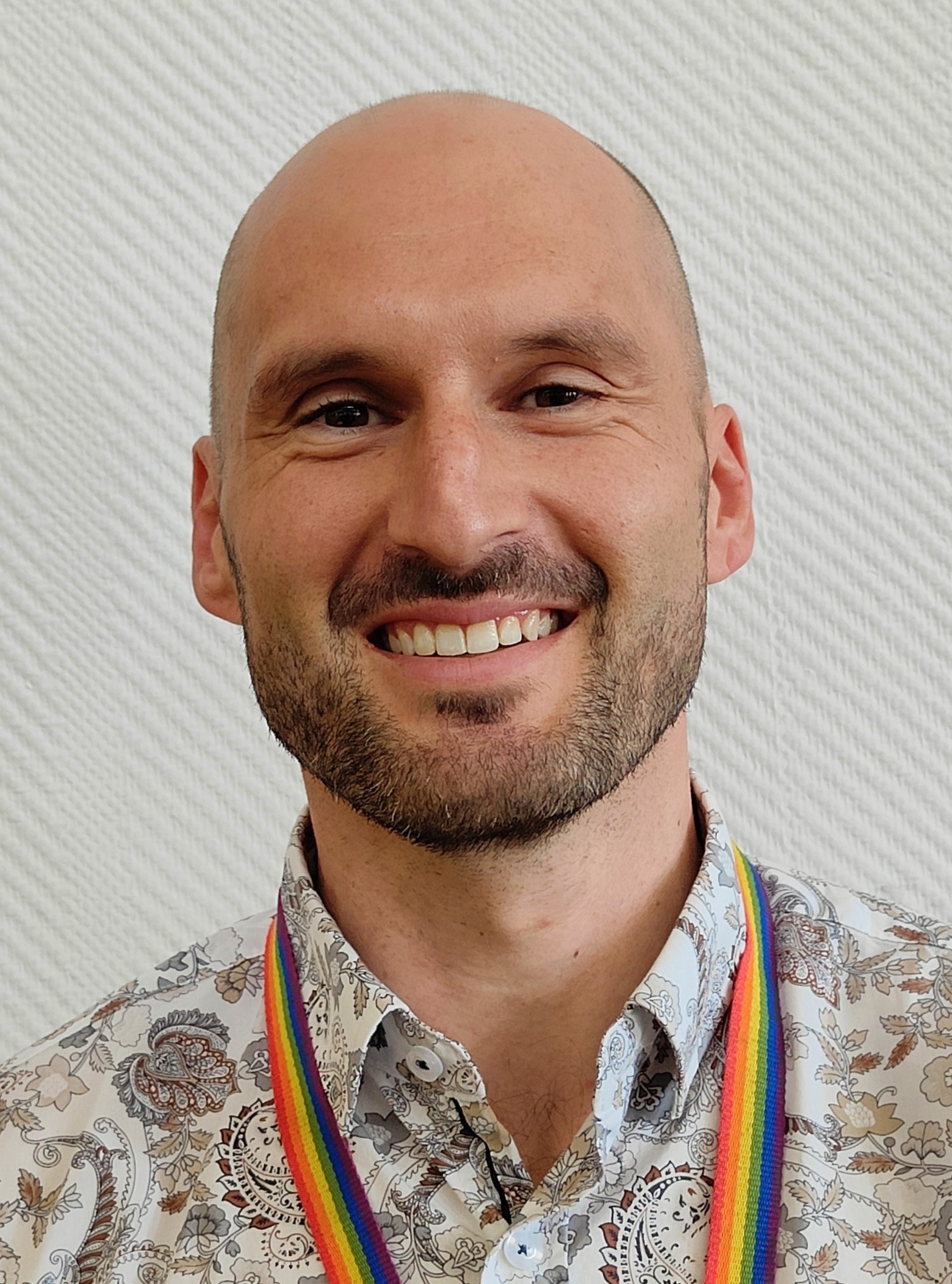
Luke - District Libraries Manager
Tell us a bit about what you do?
I’m the District Libraries Manager, a recent appointment after Paula Eskett departed earlier this year. It’s an incredible privilege to lead such a diverse and talented team. Libraries have been incredibly enriched by the recent convergence of related professions including museums, galleries and archives – the result is a blurring of lines between books, art and museum experiences. It’s a really exciting time for public libraries and there’s a feeling that anything is possible.
We play a really important role in our community as places for people to connect, learn and be inspired – we’re there for our community through thick and thin.
What really drives me is the idea that libraries need to continually evolve to meet the needs of our communities. I’m really proud to be part of a Council that continues to invest in social infrastructure – there’s a huge social and economic return from libraries and I love seeing our community flourish as a result.
How long have you worked at Waimakariri District Council?
I’ve been with Council just shy of two years.
How did you get into your job?
My background is fairly diverse, with roles in public health, communications and social enterprises – but the common threads are community connection and placemaking. I describe this work as ‘libraries-adjacent’. Libraries have been a huge presence in my life all the way back to the Christchurch City Libraries mobile bus rolling in to the local shops when I was growing up. When I entered the libraries profession at Selwyn District Council, my family wondered why I hadn’t made the move sooner – it made perfect sense, really. Having a lifelong passion for the arts made it a really easy transition and I felt at home straight away. It’s a really close knit and collaborative profession – as such, every contemporary library build raises the bar in terms of what we can offer our communities.
What things do you like the most about your job?
There are so many wonderful things about my job, but it really comes down to the incredible connections that we make. Books are an incredible conduit and they often spark really meaningful connections – irrespective of age or background. I particularly enjoy engaging with our older community around the books they’re reading and the ideas they’re thinking about. My own interests are varied, so I really enjoy the challenge of discussing books that our community are reading. There are a couple of customers that return itching to tell me what they’ve been reading and I love that. With so much social isolation and loneliness in our communities, it’s really important to maintain those connections. In a really basic sense, libraries are one of the few spaces where people can come and spend time without the expectation of spending money. I really enjoy seeing our community engage and connect regardless of age – it’s about having a sense of belonging.
Do you have a cool story you want to share?
I’m particularly proud of contributing to Te Ara Ātea, a multi-use civic space in Rolleston, which I worked on prior to coming to Waimakariri. I had the privilege of working with Te Taumutu Rūnanga and Canterbury Museum to digitise beautiful taonga (treasures) from the Canterbury Museum collection. Using photogrammetry, a process of taking thousands of photographs of an object, we were able to create large scale 3D representations of objects which were displayed alongside the physical item. Having a high resolution digital image enables people to zoom in and see so much detail you don’t see with the naked eye. I love the idea that modern technology can be used to enhance our knowledge of what has gone before us – it presents so many opportunities for storytelling.
Explore Waimakariri Libraries
Kaiapoi Advocate Speaking Up for Rainbow and Care-Experienced Communities
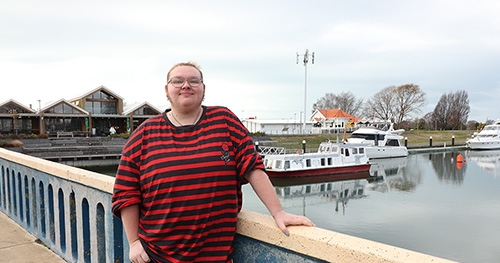
Gray Williams is using their voice to help other young people in the rainbow and care-experienced communities feel less alone.
The 20-year-old transgender male from Kaiapoi was placed in care at just two weeks old. Up until the age of 18, they’d moved through five different placements and had more than 20 social workers.
Gray suffered significant abuse in care, and has been diagnosed with autism, dyslexia, ADHD, and complex PTSD. Gray is also colour blind and has progressional tunnel vision.
Despite these challenges, Gray maintains a positive attitude and has been using their lived experience to help other young people who may be experiencing similar.
“My main thing is I don’t want people to feel alone. My whole life I felt so alone because being in care when you’re at school, you never really talk about that sort of thing.
“There’s kind of an isolation as well when you’re gender diverse or you’re part of the rainbow community. Then when you’re undiagnosed with all these disabilities, it makes school so hard too.”
Gray is involved with VOYCE Whakarongo Mai, a youth led organisation that amplifies the voices of children in care to ensure that they are heard. Gray has spent the last two years on VOYCE’s Regional Youth Council which is about promoting care-experienced youth to transform their knowledge and passion into successful advocacy.
Part of that advocacy has seen Gray share their experience to help inform care-related research and was involved in the Abuse in Care Royal Commission of Inquiry that ended recently.
Gray has also delivered a lecture to second year social work students, talked to banks about foster kids’ experiences opening bank accounts and has spoken to high schools about creating safer environments for trans people and integrating rainbow learning into their classes.
In 2022, Waimakariri District Council awarded Gray the Youth Service Award. Gray says Waimakariri does really well in supporting the rainbow community.
“The Council’s proven to be pretty supportive. The Rangiora Library and Kaiapoi Library run regular Rainbow Meetups and the Kaiapoi Fitness Centre where I used to train is really supportive too.
Gray says the biggest thing people can do to support the rainbow community is by being respectful and open to learning, whether that’s through asking questions or remembering to use someone’s preferred pronouns.
“I’m always open to answering questions about anything,” Gray says.
Gray’s main supporters are foster parents Justine and Andrew Taylor, who became Gray’s carers in 2021. Since then, they have fully backed Gray to use their voice to inspire hope and change for others.
Gray says, “VOYCE is also a really big support, as well as my transition worker through North Canterbury Wellbeing. She’s really awesome. Oh, and my therapist!”
In the next few years Gray wants to move into their own place, either in Kaiapoi or Rangiora, and has just signed up to do the New Zealand Certificate in Agriculture through Noaia Charitable Trust, based at Tuahiwi.
Gray says they’d like to do more speaking and engagement, if it means sharing their experience makes it easier for others.
“My goal is to make sure nobody has to suffer the way that I did. If I could make just one person feel less alone, then I feel like I’ve done something.”

If you are looking for one of the best spots in New Zealand to view Matariki then you don’t need to go any further than the Waimakariri District.
Oxford has recently gained Dark Sky accreditation and is one of the most easily accessible Dark Sky destinations in the country.
The conservation area lies close to the Oxford township, which means you can enjoy all of the fantastic cafes and restaurants as well as dark sky viewing within minutes from the town centre.
Oxford Dark Sky President Raul Elias-Drago says people should make it a fun night in Oxford for the whole family.
“People can come dressed in their warmest clothes and get some fish and chips for dinner and walk to one of the locations in the township to see Matariki.
There is also another spot just about 5-6km out of the township, which is darker, but you would have to drive there.”
Raul says for the real outdoor enthusiasts there is also the option to go to the Oxford Forest Conservation Area and tramp and stay at the huts.
He says you can get some of the best naked-eye views of the Milky Way from just about anywhere in Oxford.
Oxford also has the Observatory which has been open since 2006 and has been run by volunteers the whole time.
The Observatory has been educating young people from schools all over the region on astronomy and space exploration, it’s also available for private bookings and group events.
Raul says after the long running success of the Observatory it was a natural progression to apply for Dark Sky accreditation.
He says the venture was well supported by the local community who have long appreciated the area’s night sky.
If you are away for Matariki, don’t worry there will be more opportunities. The Oxford Observatory team will also be running some events in the Oxford and Kaiapoi libraries in July so check out the Waimakariri Libraries website for more details.
Where to stargaze
Oxford Observatory
Dark Sky website
What's Happening in your Community?
There are many ways to get involved with your community and celebrate Matariki this year. Check out some of the events happening near you.
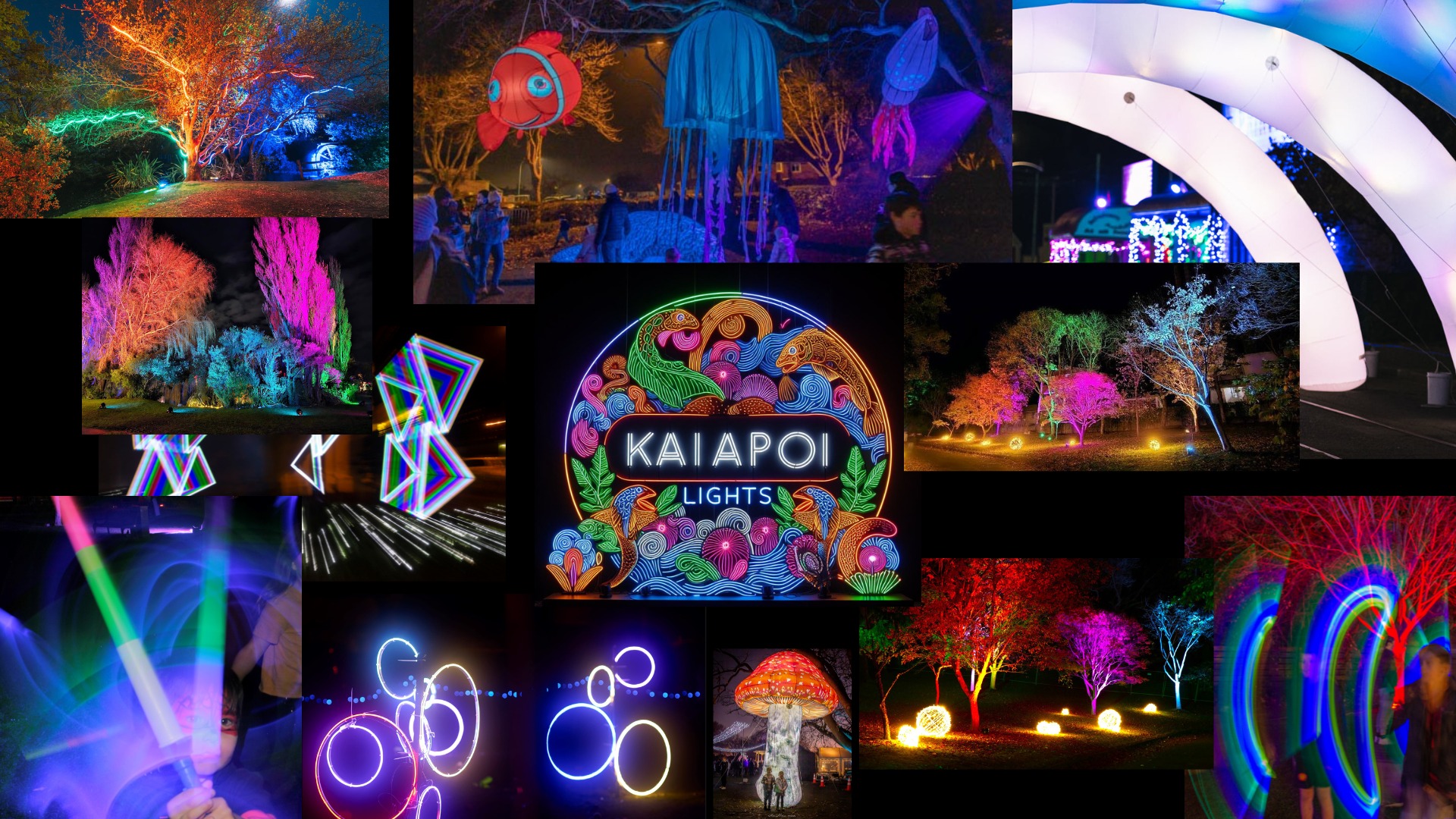
Late Night @ Your Library: Matariki
Come along to our late nights at Rangiora Library on 21 June and Kaiapoi Library on 27 June, 5-7pm, and craft some beautiful Matariki-themed art with your friends and whānau!
Kaiapoi Lights
Experience 3 nights of a special Matariki Light Path that will include performances and information about Matariki and the historical significance of the Kaiapoi area. Event details
26-28 June | 5pm-7pm each night.
Corcoran Reserve, Charles Street.
$10 per adult, $18 for two adults, $20 for families.
Matariki Kaiapoi
Enjoy an exciting fireworks display, Kapa Haka, a fantastic selection of kai and market vendors, live music and performers. Plus, new this year a fun filled fairground!Event details
Friday 28 June | 4pm-8pm.
Norman Kirk Park.
Free event.
Matariki at the Kaiapoi Food Forest
Celebrate Matariki at the Kaiapoi Food Forest and enjoy live music, market stalls, a hangi and several performances.Event details
Friday 28 June | 11am-3pm.
32 Cass Street.
Free event but hangi tickets are $15.
| Stay informed, stay involved. Subscribe for early access to our newsletter and exclusive Council Project & Community updates. Subscribe now |
|---|
